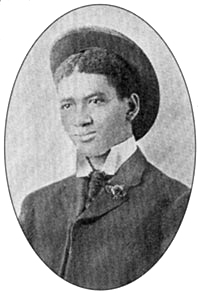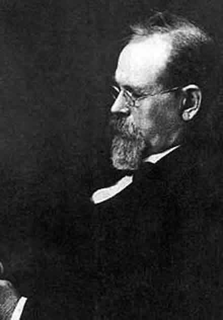Ragtime – also spelled rag-time or rag time – is a musical style that enjoyed its peak popularity between 1895 and 1919. Its cardinal trait is its syncopated or "ragged" rhythm. Ragtime was popularized during the early 20th century by ragtime composer Scott Joplin and his school of classical ragtime which was survived by James Scott and Joseph Lamb after Joplin's death in 1917. Maple Leaf Rag, The Entertainer, Fig Leaf Rag, Frog Legs Rag, and Sensation Rag, among others, are among the most popular songs of the genre. Ragtime was an immediate precursor to jazz.

Scott Joplin was an African-American composer and pianist. Joplin is also known as the "King of Ragtime" because of the fame achieved for his ragtime compositions, music that was born out of the African-American community. During his brief career, he wrote over 40 original ragtime pieces, one ragtime ballet, and two operas. One of his first and most popular pieces, the "Maple Leaf Rag", became ragtime's first and most influential hit, and has been recognized as the archetypal rag. Joplin considered ragtime to be a form of classical music and largely disdained the practice of ragtime such as that in honky tonk.

James Sylvester Scott was an American ragtime composer and pianist, regarded as one of the three most important composers of classic ragtime, along with Scott Joplin and Joseph Lamb.

The "Maple Leaf Rag" is an early ragtime musical composition for piano composed by Scott Joplin. It was one of Joplin's early works, and became the model for ragtime compositions by subsequent composers. It is one of the most famous of all ragtime pieces. As a result, Joplin became dubbed the "King of Ragtime" by his contemporaries. The piece gave Joplin a steady if unspectacular income for the rest of his life.

John Stillwell Stark was an American publisher of ragtime music, best known for publishing and promoting the music of Scott Joplin.

Louis Chauvin was an American ragtime musician.
Classic rag is the style of ragtime composition pioneered by Scott Joplin and the Missouri school of ragtime composers. These compositions were first considered "classic" by Joplin's publisher, John Stark, as a way to distinguish them from what he considered the "common" rags of other publishers. Today, any composition fitting this particular ragtime structural form is considered classic rag.

"The Entertainer" is a 1902 classic piano rag written by Scott Joplin. It was sold first as sheet music, and in the 1910s as piano rolls that would play on player pianos. The first recording was by blues and ragtime musicians the Blue Boys in 1928, played on mandolin and guitar.

The "Swipesy Cakewalk" is a ragtime composition written in 1900 by a musical duo consisting of the notable ragtime master Scott Joplin, who composed the trio, and the young composer Arthur Marshall, who composed the rest of the piece. "Swipesy" uses the simple syncopations of a cakewalk - the first beat being a sixteenth, eighth, sixteenth note division, and the second beat an even eighth note division. The style follows the AA BB A CC DD musical form common for both cakewalks and rags, particularly after the earlier publication of Joplin's hit "Maple Leaf Rag". Only the C section, composed by Joplin, departs from the cakewalk rhythm and is more pure ragtime. The composition was written in the late 1890s when Joplin was living with the Marshall family, and was teaching Arthur, composition.

"Magnetic Rag" is a 1914 ragtime piano composition by American composer Scott Joplin. It is significant for being the last rag which Joplin published in his lifetime, three years before his death in 1917. It is also unique in form and in some of the musical techniques employed in the composition.

"Weeping Willow" is a 1903 classic piano ragtime composition by Scott Joplin. It was one of Joplin's simpler and less famous ragtime scores, written during a transitional period in his life, and one of the few pieces that Joplin cut as a piano roll in a 1916 session.

"Bethena, A Concert Waltz" is a composition by Scott Joplin. It was the first Joplin work since his wife Freddie's death on September 10, 1904 of pneumonia, ten weeks after their wedding. At the time the composer had significant financial problems; the work did not sell successfully at the time of publication and was soon neglected and forgotten. It was rediscovered as a result of the Joplin revival in the 1970s and has received acclaim from Joplin's biographers and other critics. The piece combines two different styles of music, the classical waltz and the rag, and has been seen as demonstrating Joplin's excellence as a classical composer. The work has been described as "an enchantingly beautiful piece that is among the greatest of Ragtime Waltzes", a "masterpiece", and "Joplin's finest waltz".

"The Easy Winners" is a ragtime composition by Scott Joplin. One of his most popular works, it was one of the four that had been recorded as of 1940.

"The Ragtime Dance" is a piece of ragtime music by Scott Joplin, first published in 1902.
"The Silver Swan" by Scott Joplin is a ragtime composition for piano. It is the only known Joplin composition to be originally released on piano roll instead of in musical notation.

The "Searchlight Rag" is a ragtime composition by Scott Joplin, first published in 1907. It was named after the town of Searchlight, Nevada, where his friends had gone prospecting, inspiring the title.

"Heliotrope Bouquet" is a 1907 rag composed by Scott Joplin and Louis Chauvin. The first section of the piece is unique in ragtime for its structure, rhythm and melody. This and the second section were most likely contributed by Louis Chauvin, while the third and fourth section show Joplin’s style of composing.

"Wall Street Rag" is a ragtime composition by Scott Joplin, first published in 1909. As indicated by the title, the theme is based on Wall Street following the events surrounding the Panic of 1907. This is represented in the musical structure along with its corresponding annotations.
They All Played Ragtime is a non-fiction book by journalist Rudi Blesh and author Harriet Janis, originally published by Grove Press in 1950. It was subsequently reissued in 1959, 1966, and 1971 by Oak Publications, and in 2007 by Nelson Press. According to the Preface to the Fourth Edition, by Rudi Blesh, the book was conceived and researched largely by Harriet Janis, who died in 1963. It is generally recognized as the pioneering and first serious book to document the history and major composers of ragtime in America, and has been referred to as The Bible of Ragtime.















